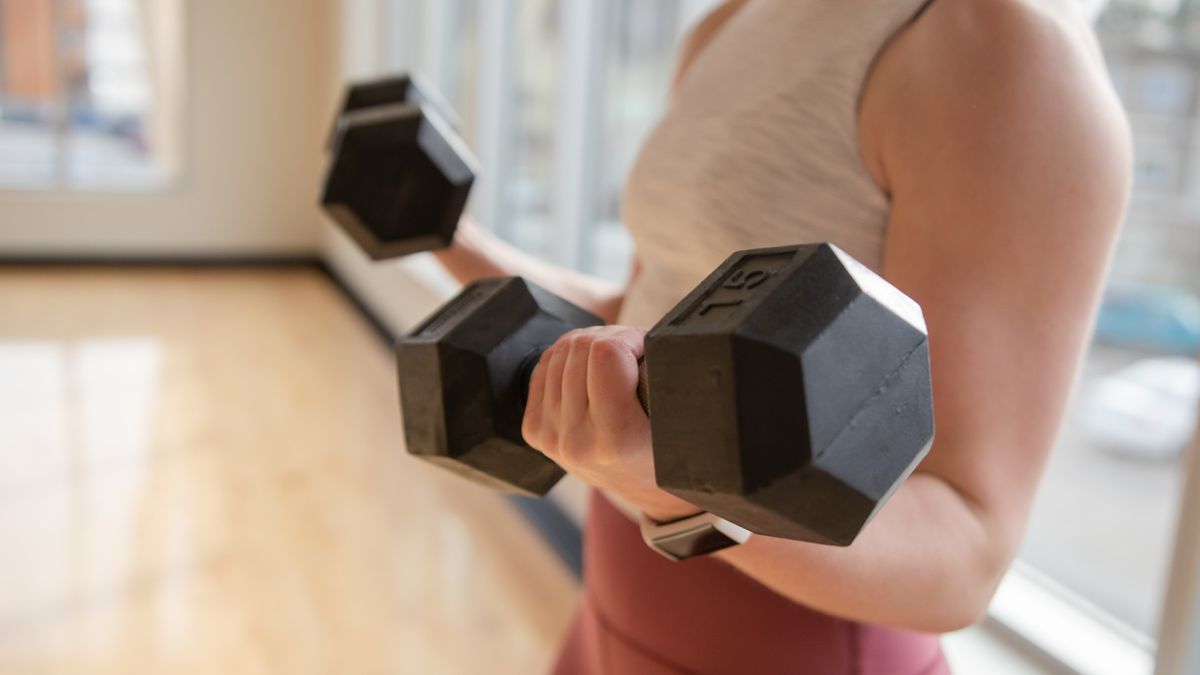Forget the weight room. Next time you need an arm pump, why not forget push-ups and try this 10-minute standing arm workout with dumbbells?
If you already have upper body workouts banked, consider adding this arm workout to your routine next time it needs a shake-up. We just recommend a set of the best adjustable dumbbells, which allow you to quickly scale weights up and down depending on the exercise.
Here’s how to do the 10-minute workout, the benefits and a few tips for maximizing your efforts.
Watch Gymshark’s 10-minute standing dumbbell arm workout:
Gymshark athlete Steve Cook, member of the Gymshark Lifting Club, guides you through as you hit your biceps and triceps hard in just 10 minutes and 10 exercises. Perform each move for 30 seconds, then rest for 30 seconds between each set.
If you feel confident with the exercises and know what you’re doing, you won’t need to follow along with the video. But I recommend beginners watch it through at least once or follow Cook through each exercise step-by-step.
Avoid throwing any exercises with your dumbbells; throwing just means putting your whole body behind the move to shift the weight rather than relying on the target muscles to lift. That might mean having a quick word with your ego and then kicking it aside when choosing weight selection.
Our verdict on the 10-minute standing dumbbell arm workout
Curls and extensions work your biceps and triceps, respectively. You’ve got some classic resistance exercises thrown in — alternating dumbbell curls, overhead dumbbell extensions and kickbacks, for example — and Cook also plays around with some wide and neutral grips to emphasize muscles differently.
One dumbbell arm exercise worth spotlighting is the Zottman curl, which has the potential to bulk up your biceps and strengthen your wrists and forearms when used consistently within strength programs. The curl variation involves performing a biceps curl, then turning your palms outward to face away from you and lowering the weights. The move helps target all three biceps muscles — biceps brachii as you lift and brachioradialis and brachialis as you lower.
Cook also plays around with single-arm movements, which famously tap into unilateral or single-sided training. If you find yourself overcompensating with your stronger side during workouts (common while weightlifting with barbells), free weights can help you isolate one arm at a time and dial into any weaknesses or underused muscle groups.
It’s great news if you don’t have much equipment to play with or have limited sets of dumbbells to hand — you don’t have to lift super heavy weights during arm workouts to see results in strength or muscle growth.
The arm muscles are much smaller and easier to overload compared with large and powerful muscle groups like the glutes, quads, or lats. That means a light set of weights can be surprisingly impactful. Here are 5 ways to build muscle without lifting heavier weights if you need some inspiration when returning to this dumbbell workout in the future.

